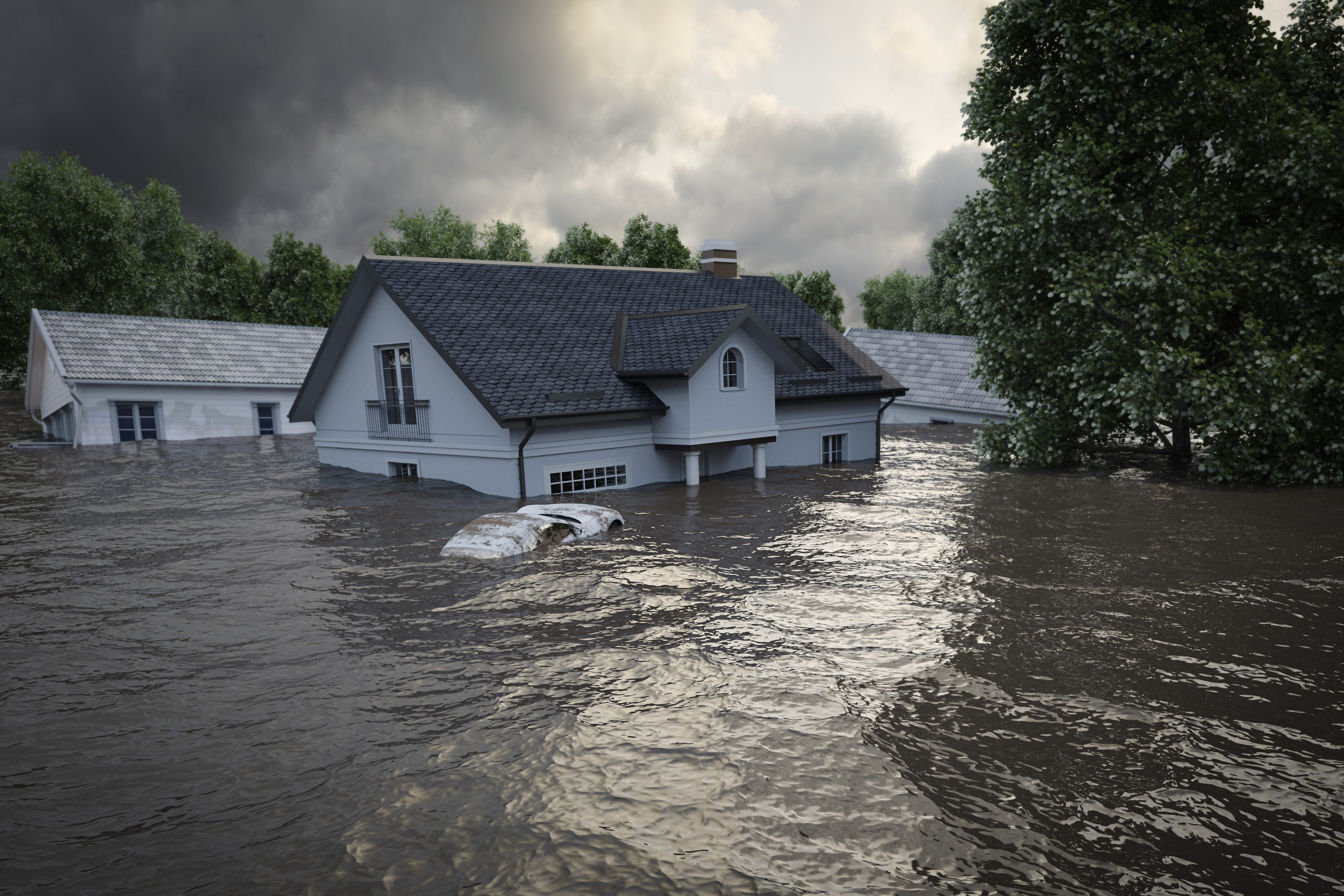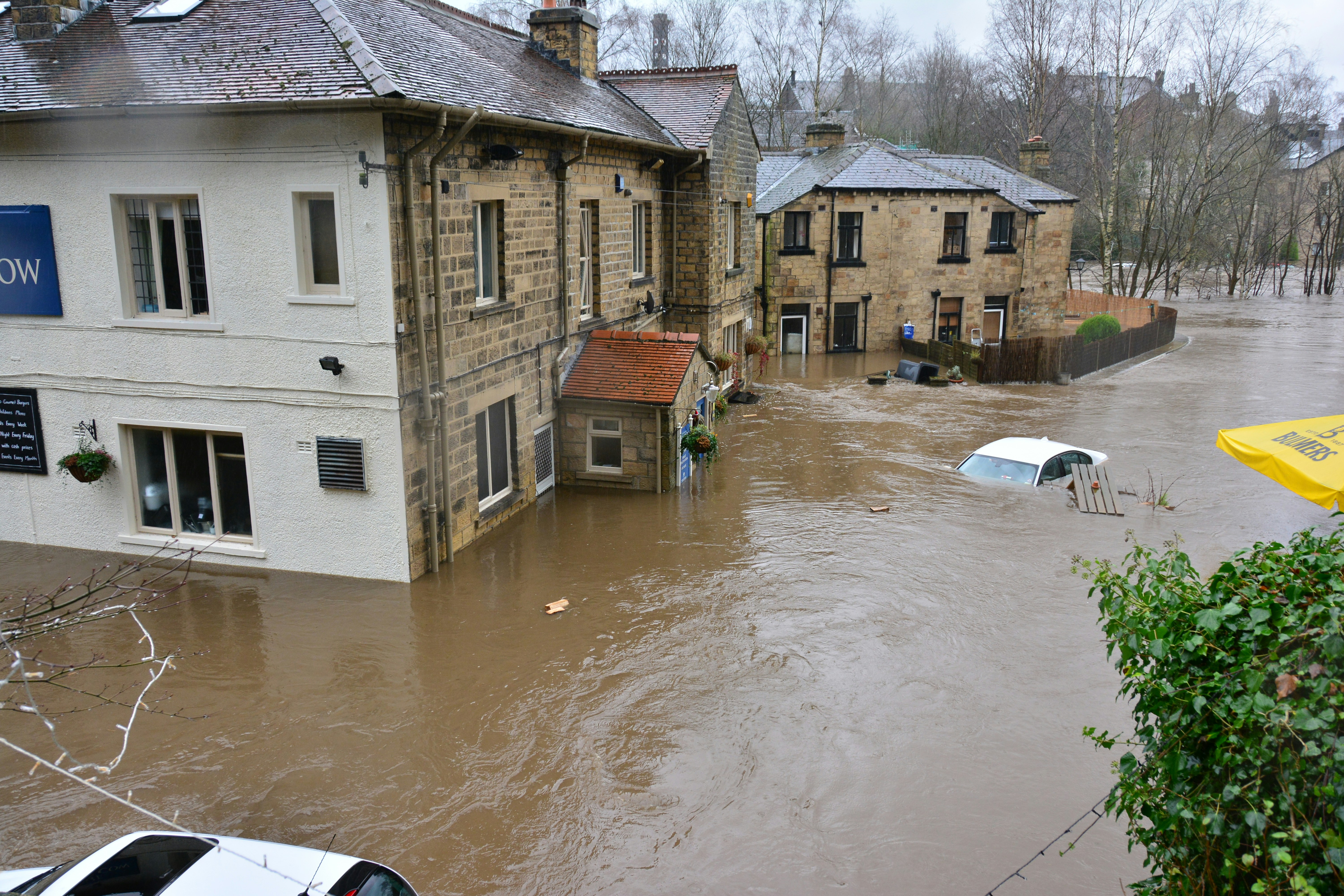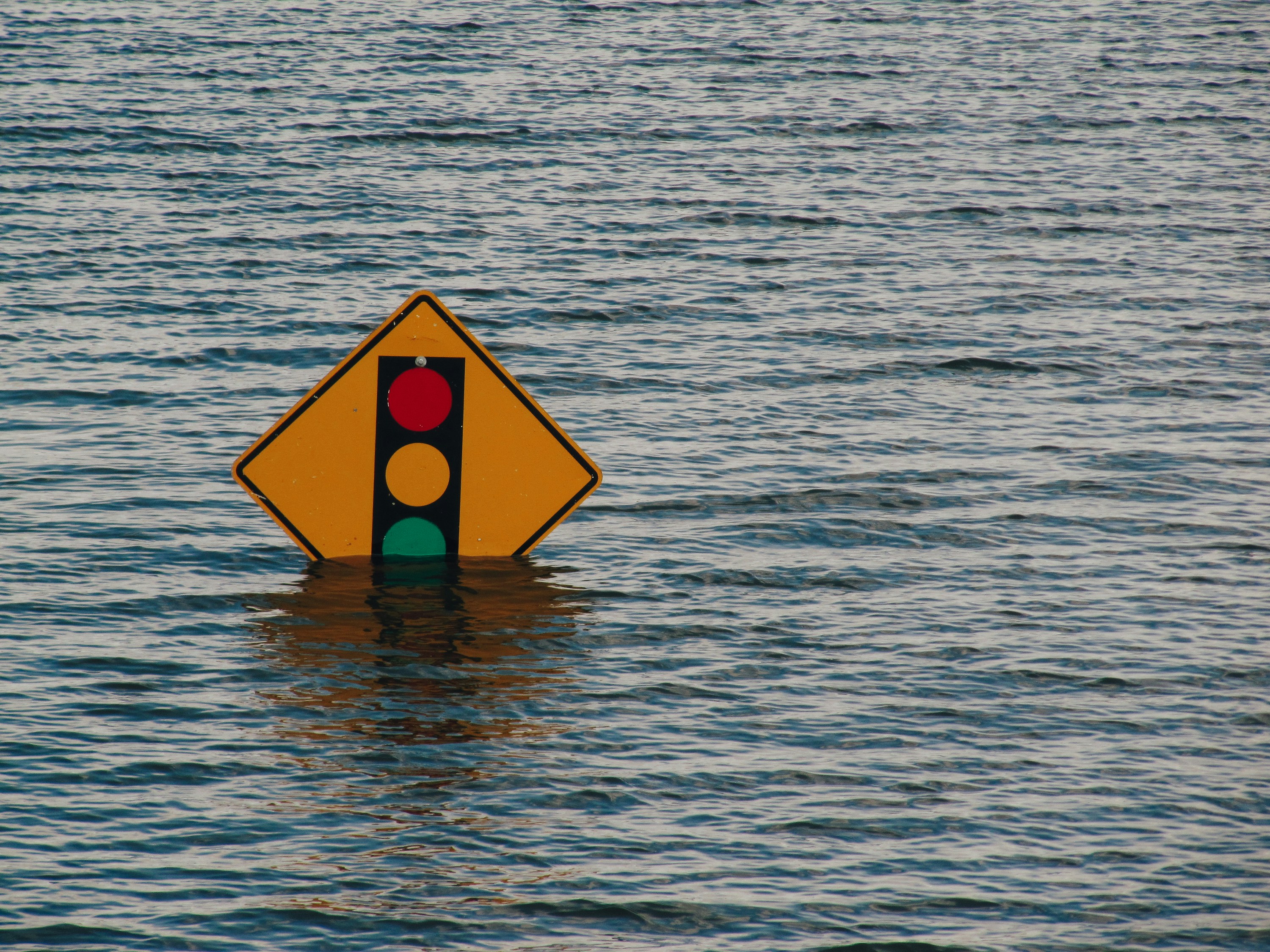Floods are among the most devastating natural disasters and extreme weather that impact millions of people around the world each year. They can strike with little or no warning, turning normal streets into rushing rivers, leaving behind a path of destruction. In this article we explore the many floods that have wreaked havoc in various parts of the world and discover what causes this natural weather phenomenon to happen.

Jump to:
What are Floods?
A flood is an overflow of water that submerges dry land. It can occur for many reasons and take different forms depending on the cause and location.
Generally, floods happen when there is too much water for an area's normal drainage systems to handle. This excess water has nowhere to go except to spread out over the landscape. Heavy rainfall, ocean storms, overflowing rivers and dams, and even fast-melting snow can overwhelm an area with more water than it’s equipped for.
Flooding itself is not all the same either and there are three main types of flooding to be aware of:
Flash Flooding - Flash floods are extremely dangerous. They are sudden floods caused by intense rainfall from storms. They can turn areas into raging rivers in a matter of minutes, not leaving much time for warnings or evacuations.
River Flooding—River floods occur when a waterway, such as a river or stream, overflows its banks and floods the surrounding areas after heavy upstream rainfall or snowmelt. They develop much more slowly than flash floods, but they can also cause extensive damage.
Coastal Flooding - Coastal floods occur when storm surges or cyclonic activity like hurricanes raise ocean water levels, allowing water to flood coastal regions. Areas near the ocean are most vulnerable, but coastal flooding can extend surprisingly far inland as well.
Recommended for you!
Best SellersCauses of Floods and How They Happen
Floods can occur for all sorts of reasons, both human and natural.
Some natural causes of flooding include:
Heavy rainfall - Excessive rain, whether from storms, hurricanes, or monsoons, can overwhelm the ground’s ability to absorb water or drainage systems to remove it. Flash flooding is common after intense rainfall.

Snowmelt - The rapid melting of a large snowpack, especially following a heavy winter, can release massive amounts of runoff that rivers can't contain.
Coastal storms & hurricanes - Storm surges pushed by hurricane winds and waves raise coastal sea levels over land.
Tsunamis - These enormous ocean waves, caused by underwater earthquakes or landslides, can bring walls of water crashing over coastlines.
We then have human causes of flooding which include:
Deforestation – Removing vegetation and trees eliminates the ability of soil to absorb rainwater and increases runoff.
Urbanisation: The Construction of buildings, roads, and car parks replaces soil that could absorb rainfall with non-porous surfaces that create more runoff.
Improper Drainage Systems - Storm drains, levees, and dams not designed or maintained properly can fail when overloaded with water.
When natural factors like heavy rain, rapid snowmelt, or storm surges occur, the excess water quickly accumulates into streams and rivers. If the runoff exceeds the capacity of these drainage channels, the water spills over the banks and causes a flood.
Deforestation and urbanisation reduce the land's capacity to absorb water, creating more runoff that drainage systems weren't designed for. Ageing infrastructure like dams and levees can then get overwhelmed by the increased runoff and breach, flooding surrounding areas. Even areas not directly impacted can get flooded as swollen rivers back up into smaller waterways and low-lying regions downstream.
The more intense the precipitation or watertight the ground cover, the more likely a location is to experience flooding.
Notable Flood Events Around the World
While floods occur regularly across the globe, some flood events have been particularly devastating due to their extreme rainfall, size and impact on the region.

Flooding in Libya
Libya is one of the world's driest countries, with much of it comprising desert landscapes. However, the northern Mediterranean coastal regions have experienced some of the heaviest flooding events in recent memory. In October 2021, a month's worth of rain engulfed cities like Tripoli and Misrata in just a few days. The excess rainfall overwhelmed drainage systems and caused chaos, with roads inundated, houses and properties damaged, and dozens of fatalities reported.
Earlier in 2019, more than a year's worth of rain pelted northwestern Libya over just a week. Major flash flooding swamped Tripoli and other areas, sweeping away vehicles, collapsing buildings, and displacing thousands of people. At least four people lost their lives and over 3,500 homes were damaged or destroyed in what was described as potentially the worst flooding in nearly 30 years.
However, most recently, in 2023 two dams in Derna collapsed, shortly after Storm Daniel brought torrential rain to the city. It was estimated that over 30 million cubic metres of water was displaced causing severe flooding. The death toll sat at over 4,700 people.
Flooding in Italy
Being a peninsula surrounded by multiple bodies of water, combined with a landscape of mountainous and coastal regions, Italy has experienced its share of deadly and destructive flood events over the years.
In November 1966, the River Arno burst its banks after days of torrential rains, inundating the historic city of Florence and surrounding areas of Tuscany. It was called the "Flood of the Century", and it killed over 100 people, damaged millions of masterpieces of art and literature, and caused billions in economic losses.
More recently, in October 2011, torrential rains caused flash flooding in several provinces of northeast Italy near Venice. Towns were submerged with waters reaching up to 20 feet in some areas. The floods claimed at least 8 lives and an estimated €1 billion in damages.
Nearly exactly seven years later, in October 2018, a storm hit Palermo in Sicily. Over two feet of rain fell in just a few hours, sending dangerous torrents of water through streets and valleys. At least 13 people died in the flash flooding on the island.
Flooding in Dubai
Despite being located in a desert, Dubai’s extensive urbanisation including hundreds of buildings and large paved roads concentrates rainfall runoff that traditional drainage struggles to cope with, making it prone to flooding.
In January 2008, heavy rains over a short period caused widespread flash flooding in Dubai. It overwhelmed the city's drainage systems, and left many streets submerged under several feet of water. Underpasses filled up trapping vehicles, and several people had to be rescued from the floodwaters.
More recently in November 2021, areas of Dubai saw significant flooding again after exceptionally heavy rains pounded the emirate. Roads were inundated, and the Dubai Mall was partly flooded after rainwater coursed through the roof.
The Dubai government has taken action to combat the risk of flooding. They have invested heavily in an extensive underground drainage network and dam system capable of diverting flash flood waters out towards the desert. Emirati authorities have also implemented better flood warning systems.
Flooding in Greece
Greece has experienced several severe floods over the years, courtesy of its exposure to powerful Mediterranean storm systems. This puts the country at risk of excessive rainfall that can rapidly escalate into flash flooding.
One of the most memorable floods happened in November 2017 in the capital Athens where a Mediterranean hurricane saw over 8 inches of rainfall in just a few hours. The resulting flash flooding was catastrophic, turning streets into fast rivers that ripped up roads, carried away vehicles, and submerged homes and businesses. At least 23 people lost their lives in the Athens floods and hundreds were left homeless.
The Greek islands have also been impacted by heavy rain storms, which have caused deadly flooding. In November 2022, torrential rainfall triggered flash floods on the islands of Crete and Rhodes. Many towns and homes, roads, and infrastructure were severely damaged, and several fatalities were reported. 16 lives were lost.
Flooding in Pakistan
Pakistan has unfortunately experienced flooding more frequently than other countries. Since its independence from India in 1947, it has seen a total of 29 floods. The sheer number could be down to the country’s location. It is situated at the meeting of several large rivers and has very volatile weather patterns.
In 2010, record-breaking rainfall caused massive flooding across the entire country. Over 2,000 lives were lost, and over 20 million people were affected by it—more than the combined total of the 2004 Indian Ocean earthquake, the 2010 Haiti earthquake, and the 2005 Kashmir earthquake.
Only two years later, Pakistan's province of Sindh was submerged by renewed Indus River flooding, destroying thousands of homes and killing over 100 people. 4.8 million people were left homeless and without basic services.
The most recent and potentially most disastrous flooding occurred in 2022, brought on by heavy monsoon rainfall combined with glacier melt in the north. At its peak, one-third of Pakistan was underwater, affecting over 33 million people. Over 1,700 lives were lost and millions were displaced, creating a humanitarian crisis.
As our examples illustrate, the impacts of flooding can be catastrophic, and climate change is expected to increase the frequency and intensity of extreme weather, including floods. Learning more about the climate and weather can help us better understand these natural disasters so that we can make plans to reduce the impact of floods and strengthen communities against future flood disasters.
At the Centre of Excellence, we offer an accredited Meteorology Diploma course for just £29 (save £98!). It includes 10 modules, with topics on precipitation, blizzards, monsoons, and weather forecasting methods, so you can learn more about the atmospheric phenomena that trigger flooding events and other extreme weather.













